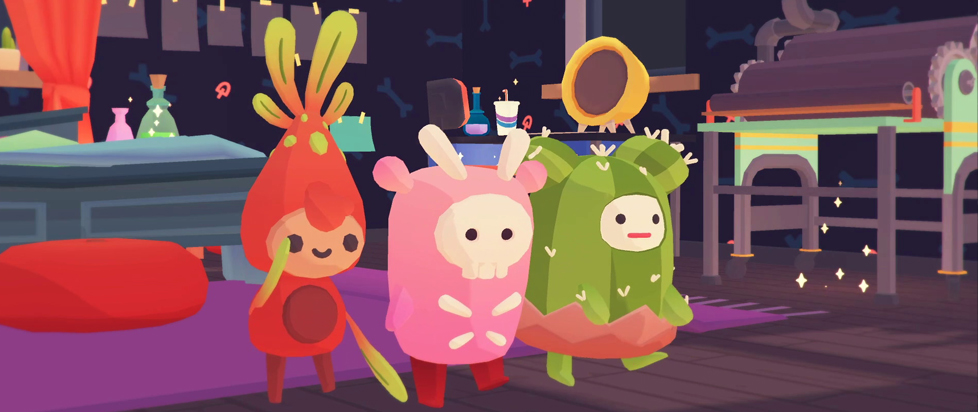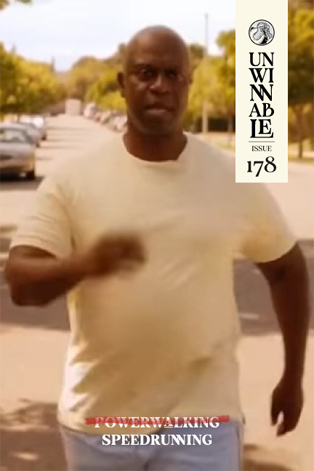
Spoopy, Not Spooky: The Intersections of Cozy Games and Horror

This column is a reprint from Unwinnable Monthly #178. If you like what you see, grab the magazine for less than ten dollars, or subscribe and get all future magazines for half price.
———
We are what we’re afraid of.
———
A confession: For someone who’s supposed to be writing a monthly column on horror games, I haven’t been playing a ton of them lately. We’re currently in a little bit of a spooky lull, before the double whammy of the Silent Hill 2 remake and Slitterhead descend upon us later this year, so it’s true that there has been a little bit of a content drought. However, that’s not to say that I haven’t been gaming – I have. The last few weeks, my attention has been devoted, entirely and utterly, to the adorable and cozy farming-slice-of-life-pokemon-alike Ooblets. Every day, I log on, farm my crops, tend to my critters and pit them against each other in severely saccharine dance battles to win more Oobs for my estate. I’m obsessed. I gotta catch ‘em all, to the detriment of this byline and the spooky content it requires.
Or maybe not. While on the surface they’re fairly dissimilar, there’s pretty substantial evidence that the Venn Diagram of spooky vs. cozy game enjoyers has a large middle section. We only need to think about the March 2020 synchronicity of Doom Eternal and Animal Crossing: New Horizons for evidence that these two subgenres have a lot of shared fans. I know for myself, certainly, that I’m playing one or the other a solid 80% of my gaming time. But why? What draws people to both of these subgenres, when they are seemingly so different?
My working hypothesis here is simple – that despite their aesthetic differences, both of these game types operate in the exact same sort of wish-fulfillment space. They’re actually just two sides of the same escapist coin.
Follow me here – let’s start with cozy games. In any given game in this genre, Stardew Valley, Ooblets, Animal Crossing – the player is absolutely assured that nothing truly terrible will ever happen to them or anyone else in the game. While people can and do get incredibly invested, the stakes are perennially super low – you are never in any virtual danger. In this way, the game is entirely unlike reality, where we’re all one really bad day away from losing everything.

Now, let’s look at horror. In horror, everything is the most high stakes things can get, basically all the time. You’re constantly at a disadvantage, always a few moments away from utter devastation. Everything that could possibly go wrong always does. Danger and shit luck are static constants that can be methodically predicted and planned for.
And it’s therein that I think the mutual draw lies – across both of these genres, the name of the game is predictability. Whether you’re always gonna have a really good day or a really bad one, you know for a certainty when you log in which one it will be, and you can prepare accordingly. At the end of the day, players of both games are driven by a desire to live in a purely deterministic universe where we can see the gears turning and we have a 1:1 grasp on causality. It’s random chance, things happening for seemingly no reason, that pervade the horror of our day-to-day lives, and simply knowing what will happen in either direction is less stressful than reality.
Developers have started to catch onto this, and some games have started dabbling in the mixture – Cozy Grove, the upcoming Haunted Chocolatier, and the bananas Cronenberg-ian third act of Bugsnax all indicate that the cozy/scary niche is a generative one to work in (not to mention the lucrative Hot Topic merch deals that I’m sure everyone benefits from with this intersection). Fundamentally, we all want the same thing: to be able to log on and drop ourselves into an experience that we understand, and therefore maybe control, better than we can the circumstances we find ourselves in during our time in realspace.
This also explains, I think, why so many people get so deeply invested in these genres – my mother was diagnosed about a year ago with progressive dementia, and as she loses her ability to communicate and participate in what happens around her, she’s fallen further into the screen of her Switch, where her Animal Crossing village is still something she understands. The comfort of the familiar, the known, and the predictable has a strong pull on us all. Variety may be the spice of life, but these spaces of known-ness are valuable, too, as places for us to ground and stabilize in a world where we can control our circumstances with less and less frequency.
———
Emma Kostopolus loves all things that go bump in the night. When not playing scary games, you can find her in the kitchen, scientifically perfecting the recipe for fudge brownies. She has an Instagram where she logs the food and art she makes, along with her many cats.




